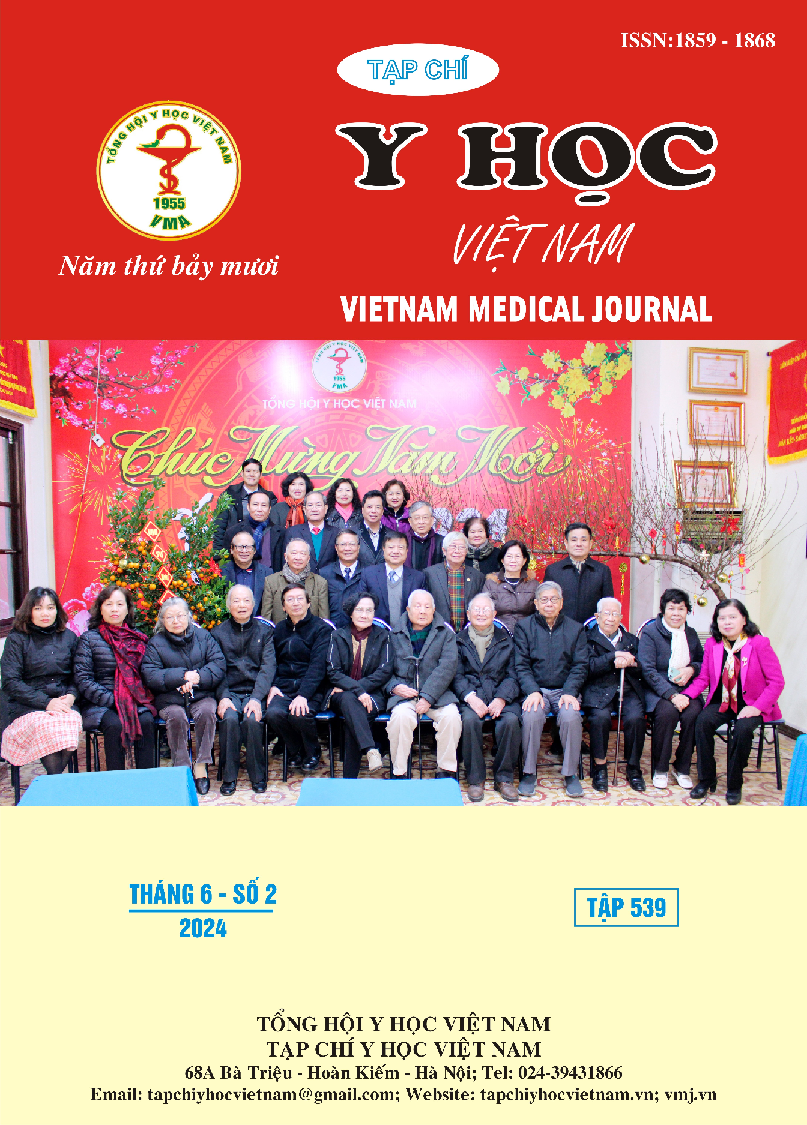RESEARCH ON THE SITUATION, RELATED FACTORS, AND INTERVENTION RESULTS IN CONTROLLING MILDLY ELEVATED SERUM URIC ACID LEVELS IN MALE HYPERTENSIVE PATIENTS UNDERGOING MEDICAL EXAMINATIONS AT TAN UYEN MEDICAL CENTER, BINH DUONG PROVINCE, 2023 – 2024
Main Article Content
Abstract
Background: Elevated uric acid is the cause of urate deposition diseases such as gouty arthritis and chronic kidney disease. Elevated uric acid is closely associated with various other conditions including hypertension. Elevated serum uric acid in hypertensive patients serves as an early biological indicator for hypertension-induced kidney damage. Objectives: 1) To determine the prevalence and extent of uric acid elevation in male hypertensive patients over 18 years old. 2) To describe some factors related to uric acid elevation in male hypertensive patients over 18 years old. 3) To evaluate the outcomes of interventions aimed at controlling mildly elevated uric acid levels in male hypertensive patients over 18 years old undergoing medical examinations at Tan Uyen Medical Center, Binh Duong Province, from 2023 to 2024. Materials and methods: A cross-sectional study with combined analysis of intervention without a control group was conducted on 240 male patients over 18 years old who were managed and treated for hypertension at the Outpatient Department - Tan Uyen Medical Center, Binh Duong Province, using a convenient sampling method. Results: The mean serum uric acid among the 240 patients was 406.47 ± 121.29 μmol/L. Of these, 54.2% had normal uric acid levels, while 45.8% had elevated serum uric acid (35.8% mildly elevated, 9.2% borderline high, and 0.8% high). Factors associated with elevated serum uric acid included age > 60, metabolic syndrome, sedentary lifestyle, frequent consumption of high and moderate purine products, ≥ 3 servings/week of animal fat, ≤ 2 servings/week of vegetables, and fruits. After a 3-month health education intervention, the mean serum uric acid decreased by 93.1 μmol/L (95% CI: 57.6-128.5), p < 0.001. Among them, 74.4% of patients normalized their uric acid levels, while 12.8% showed decreased but not normalized levels. Conclusions: The study revealed that 45.8% of hypertensive patients had elevated serum uric acid levels. Health education interventions were effective for patients with mildly elevated serum uric acid levels.
Article Details
Keywords
uric acid, serum, hypertension, health education, related factors
References
2. Dehlin, M., L. Jacobsson, and E. Roddy, Global epidemiology of gout: prevalence, incidence, treatment patterns and risk factors. Nat Rev Rheumatol, 2020. 16(7): p. 380-390.
3. Teng, G.G., et al., Serum urate levels and consumption of common beverages and alcohol among Chinese in Singapore. Arthritis Care Res (Hoboken), 2013. 65(9): p. 1432-40.
4. Saito, Y., et al., Uric acid and cardiovascular disease: A clinical review. J Cardiol, 2021. 78(1): p. 51-57.
5. Hội Tim mạch học Việt Nam, Khuyến cáo về chẩn đoán và điều trị tăng huyết áp 2022. 2022.
6. Yi, K., et al., Adherence to DASH Dietary Pattern and Its Association with Incident Hyperuricemia Risk: A Prospective Study in Chinese Community Residents. Nutrients, 2022. 14(22).


